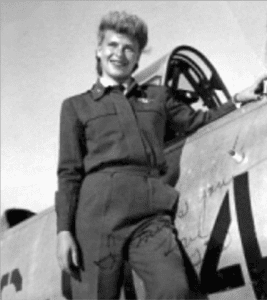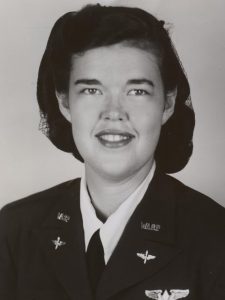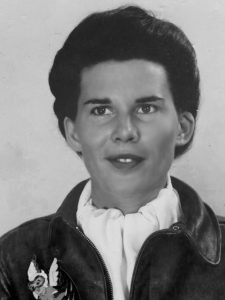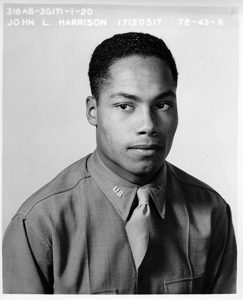 Jean Downey Harman
Jean Downey Harman
1924 – January 21, 2023
Class: 44-W-9
Graduated: November 8, 1944
Training Location: Avenger Field (Sweetwater, Tex.)
Assigned Bases: Marana Army Air Field (Ariz.)
Planes flown: PT-17 and BT-13
“I was very interested in aviation. In those days, women did not fly as a profession but flew for fun; so ever since I was little, I wanted to fly.”
Jeans introductory flight was from Douglas Airfield in West Los Angeles when she was only 7. She was hooked for life but being raised in the city of San Francisco was only able to dream about it until she got to the College of the Pacific in Stockton, California at age 16. It was Dec. of 1944 when Pearl Harbor occurred, and all civilian flying was curtailed within about 300 miles of the coast. The Civilian Pilot Training program that was one of Jeans college courses, continued the aviation ground school but the planes were moved to Nevada. She finished her AA in 1943 and moved to Nevada where she got her Private Pilot License in Yerington Nevada. Her stepfather financed that (but her mother never knew). Soon, she reached the eligible age of 18 and immediately applied for WASP training. There were 25,000 women who applied and 1,078 that made it through, so we were a very elite group
Accepted WASP entrants were already pilots, but the Army Air Force wanted us to fly the military way, and those who were accepted were required to go through the same flight training as the incoming inexperienced males entering the AAF.
In contrast though, the women were required to pay their own transportation to Sweetwater, Texas, where the training took place, and likewise their transportation home when the group was disbanded in December of 1944. Similarly, women killed while on active duty were not provided casket transportation home, funeral expenses, or even a gold star for their family to hang in the window.
According to Harman, men were not satisfied with women doing jobs that, until then, only men had done. “The men did not like it at all, the idea was that women did not belong in a man’s job. The pilots were heroes, and big shots and women did not belong there, so it was very difficult.” Despite this resistance from men, Harman said she would do it again in a heartbeat.
“We would pay to do it again, we would never have had [in civilian life] an opportunity to fly bigger planes, we flew everything that the military had.” This included the fighter plane and the big bombers. “But we would have never had that opportunity in civilian life.”
Harman is especially proud of graduating from pilot training. “Just graduating from the training, each class only graduated about 50%, so it was quite an accomplishment to get through; I was very proud of it.”
After graduating from training, the WASP served in all Stateside capacities, successfully flying every aircraft in use at the time and at many levels: ferrying, instructing, flight testing, towing targets. All at a salary well reduced from that of the males.
Jeans orders took her to Marana Army Air Base at Tucson, Arizona where she tested planes that had been in major overhaul, before being handed over to cadets to fly.
The original intention for the WASP to be militarized, was politized and never materialized. They were disbanded summarily on Dec 20, 1944.
Meanwhile Jean married then LCDR John Harman captain of a Navy ship, who later trained to become a Naval aviator. As a career Navy wife, she never gave up being around airplanes for the 62 years they were married, though she never again flew her own plane
33 years later, after much struggling, (particularly on the part of Congressional women), the WASP were finally given status as a military entity and became official Veterans.
Of their progeny, only one, a grandson, has pursued the life of a pilot and is now a captain for a commercial airline.In her later life, Jean was often given awards for doggedly chasing her dreams under difficult circumstances as a pioneering woman flyer. The female pilots of today are well-aware of the role of the WASP in making it possible for them to achieve the success they have todays aviation world.
Hear Jean tell some of her amazing stories about her time serving in the Women Airforce Service Pilots in this 2010 interview: https://www.youtube.com/watch?v=Fq3e146U9VY
Sources:
M-A Chronicle
Smithsonian Air & Space Museum
Texas Women’s University in Denton, Texas





